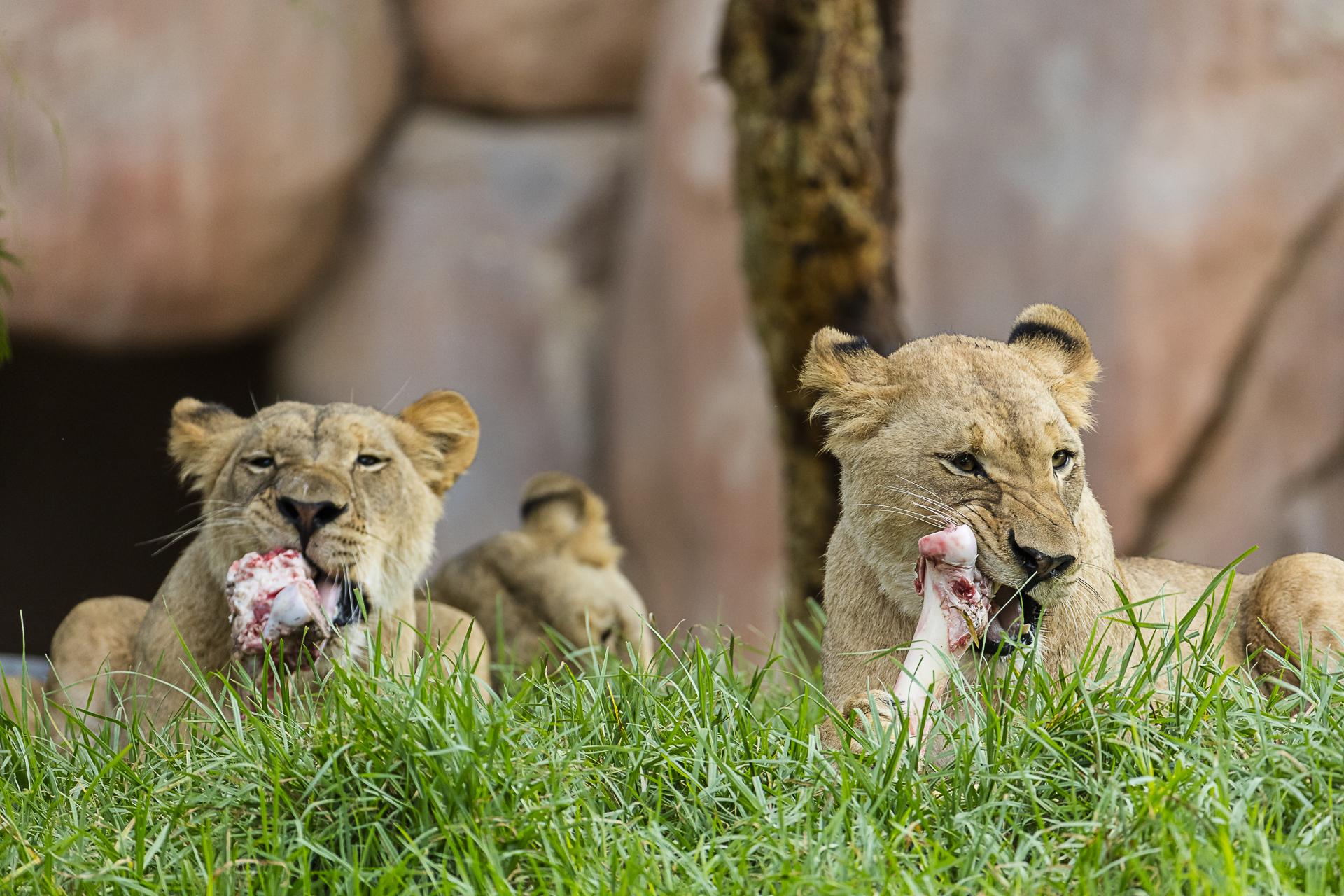
For most American families, Thanksgiving dinner is the belt-busting dining event of the year. At this meal, the average person gobbles down 1 pound of turkey, plus stuffing, pie, and seemingly endless “trimmings,” adding up to around 4,500 calories. But for some wildlife species, that doesn’t even add up to an appetizer.
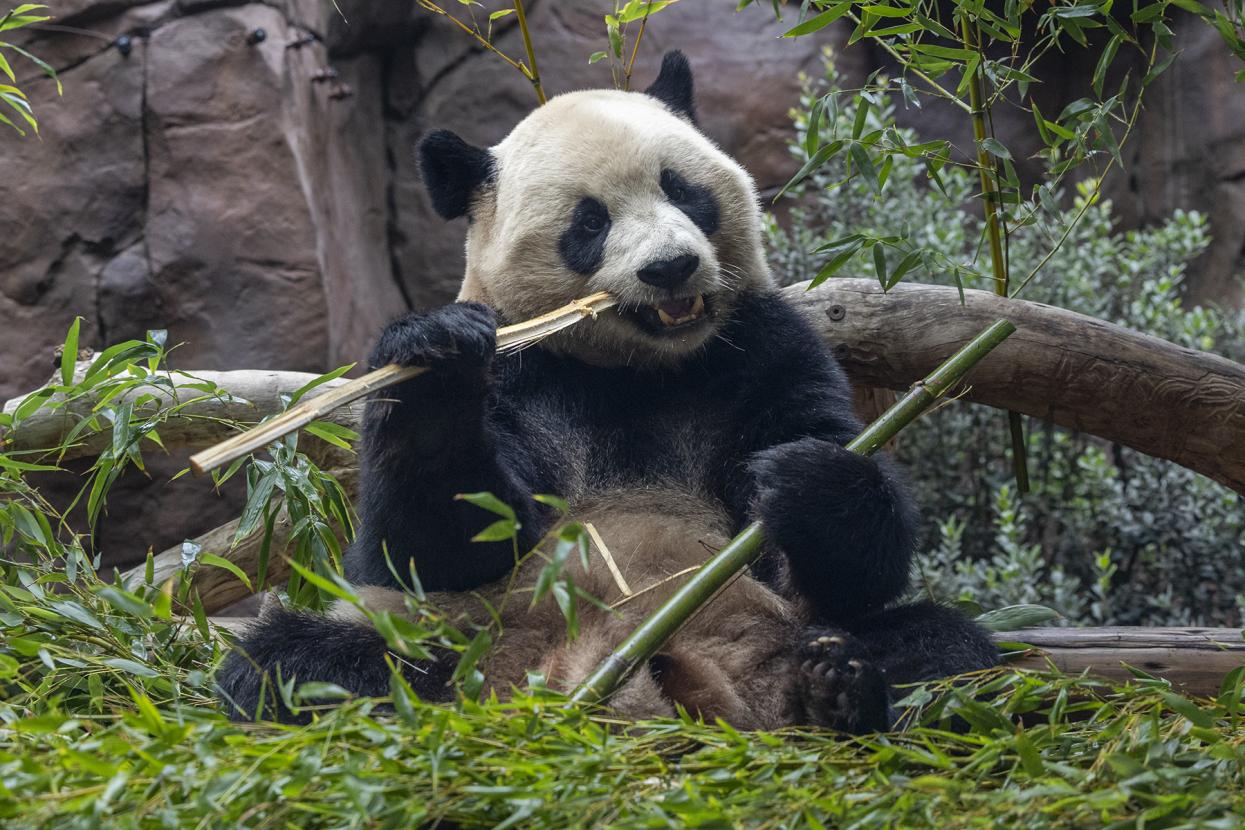
Giant pandas are all-day eaters, feasting on their favorite food—bamboo—for 10 to 14 hours every day.
Giant Panda
About 99 percent of a giant panda’s diet consists of bamboo, but that doesn’t mean they’re light eaters. In fact, giant pandas munch on bamboo for 10 to 14 hours a day. During this daylong meal, they consume about 40 pounds of it. They need to eat that much because of bamboo’s relatively low nutritive value. And they do find plenty of it in their native ecosystems, China’s mountainous bamboo forests, which we work to protect through our Asia Conservation Hub.
At the San Diego Zoo’s Denny Sanford Panda Ridge, giant pandas Xin Bao and Yun Chuan eat a wide range of bamboo species, all grown on six dedicated acres at the San Diego Zoo and San Diego Zoo Safari Park. They browse through about 100 pounds a day and individually select their favorite leaves, culms, and shoots.
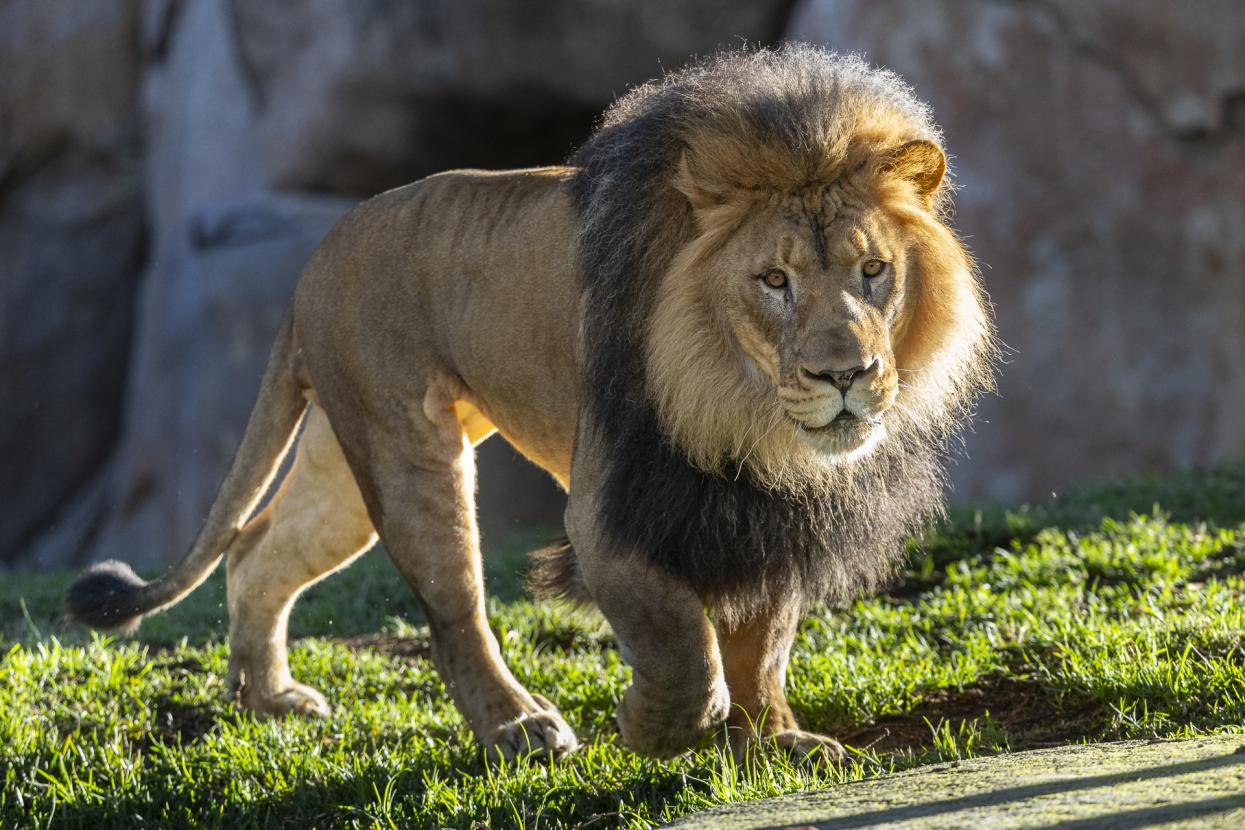
After a successful hunt, a male lion may chow down on more than 80 pounds of meat.
African Lion
Across the savanna, when a pride of lions gathers to feast on the bounty of a successful hunt, a male lion can eat up to 88 pounds of meat. Smaller, more agile female lions (usually the ones that hunt the meal) can consume up to 55 pounds in one sitting. Lions digest their food quickly, so if there are any leftovers, they don’t have to be coaxed back for a second helping. And just like humans after Thanksgiving dinner, lions appreciate a good nap—even without a sofa, they may doze up to 20 hours in a 24-hour period.
Find out more about lions and the challenges this vulnerable species faces in their native ecosystems at the Safari Park’s Lion Camp and the Zoo’s Harry and Grace Steele Elephant Odyssey habitats.

Green anacondas can weigh 500 pounds or more, and swallow their meals whole. If the meal is large enough, they may not need to eat again for weeks.
Green Anaconda
Snakes are also big eaters, capable of consuming prey weighing up to a fifth of their own body weight. For a 500-pound green anaconda in our Amazonia Conservation Hub, that could be a 100-pound meal!
No chewing is required. These massive snakes take in their prey whole and headfirst, holding onto it with sharp, backward-facing teeth. They use their stretchy jaws, mouth, throat, and muscles to slowly swallow all of it. And if the meal is large enough, an anaconda may not have to eat again for several weeks—or even months.
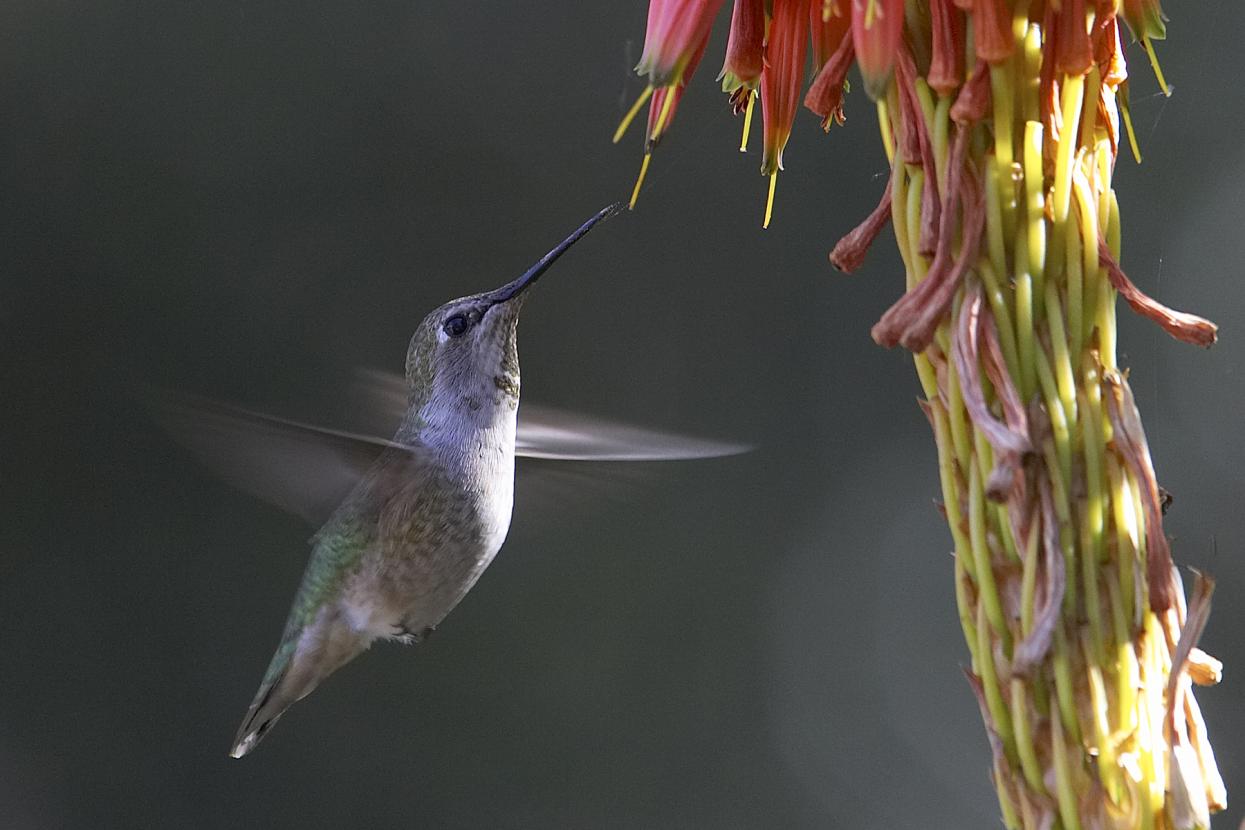
Tiny Anna's hummingbirds gather flower nectar from up to 20 blossoms per minute. They need to eat something about every 15 minutes—all day—to support their fast-paced lifestyle.
Anna’s Hummingbird
Like the relative who hovers around the buffet table sampling “just a little” of everything—and maybe ends up eating more than any of the sit-down guests—hummingbirds keep moving, but they eat a lot. There are 366 known species of these petite birds, including the Anna’s hummingbird, found in habitats throughout our Southwest Conservation Hub and across the Pacific Northwest.
While they may be small, the average hummingbird needs to eat every 15 minutes or so during the day. These fast-moving birds have been observed visiting up to 20 flowers a minute to take in nectar. In doing so, they consume between 3.14 and 7.6 calories a day, which is the proportional equivalent of 155,000 calories per day for a human, or about 35 Thanksgiving dinners!
You can get a better idea of their speed and their seemingly insatiable appetite for flower nectar at the Zoo’s William E. Cole Family Hummingbird Habitat.
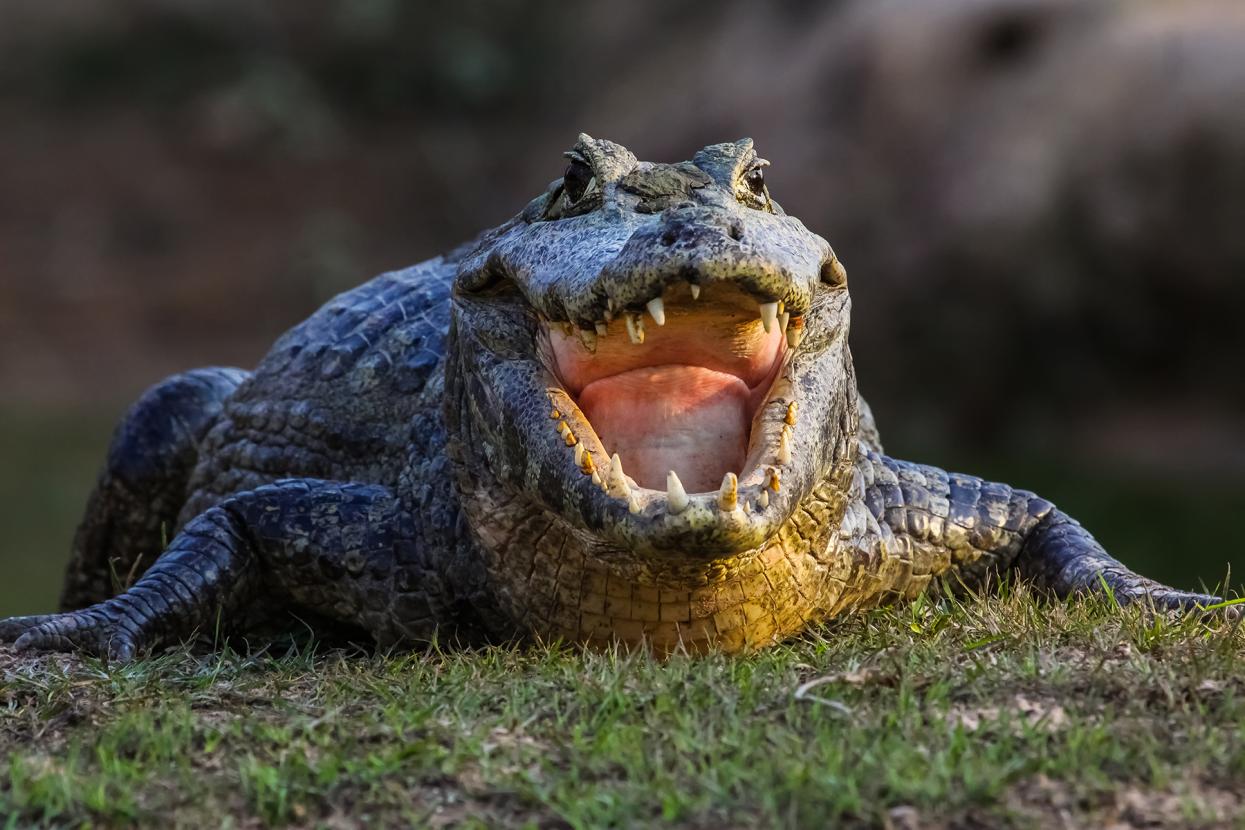
A big meal for a black caiman can weigh up to half as much as they do.
Photo: Uwe-Bergwitz/iStock/Getty Images Plus
Black Caiman
When they’re hungry, some crocodilian species, like the black caiman of Amazonia, can eat up to half their body weight, including large mammals like tapirs or deer. They aren’t dainty eaters, either. Crocs try to swallow food whole when they can, positioning the prey just right so that they can toss their head back and let it slide down their throat.
After finishing off their feast, crocodilians may not eat again for a month or more. In fact, because they are able to store fat in their tails, some large adults have been observed to go more than a year without eating.
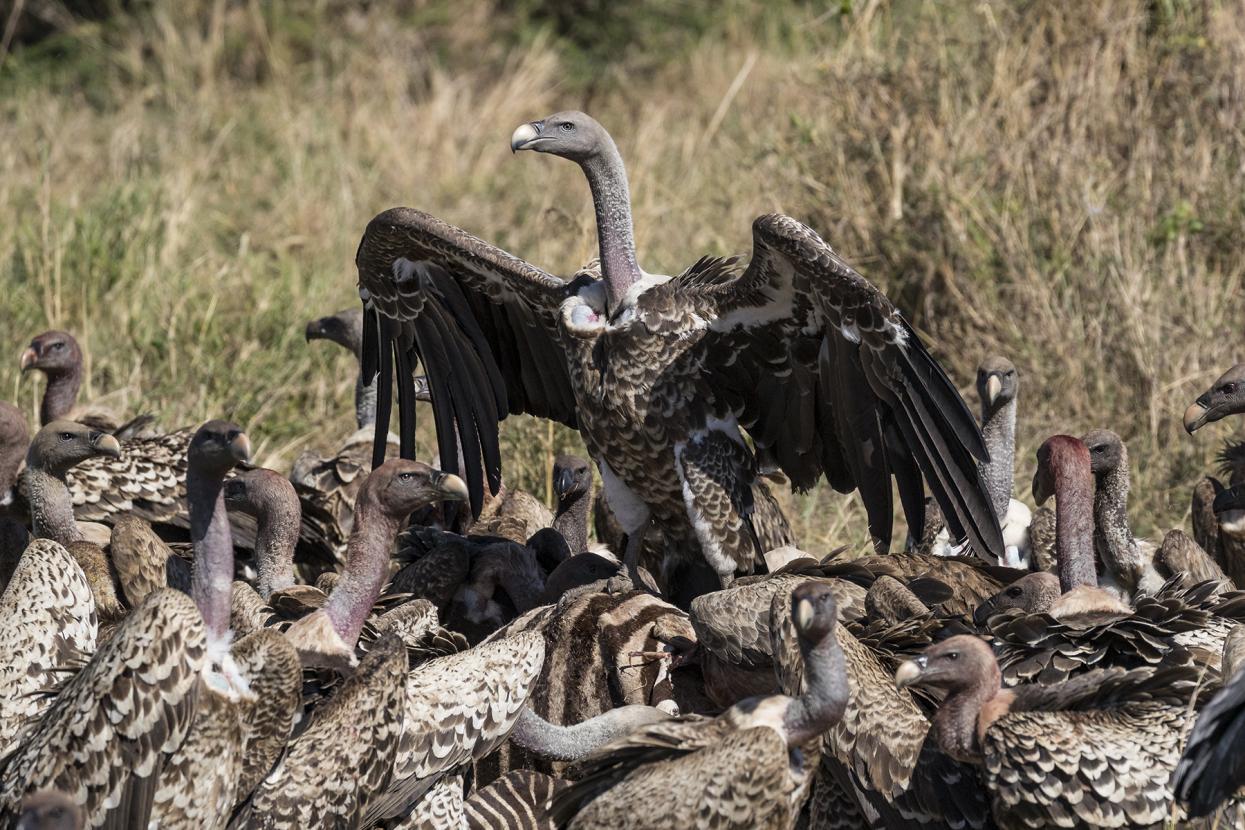
Ruppell's vultures often eat in large groups, picking a dead animal carcass clean.
Ruppell’s Vulture
If anyone says that you “eat like a bird,” they probably aren’t talking about any of the world’s 23 vulture species. Since vultures like the Ruppell’s vulture, which we protect through our Savanna Conservation Hub, generally feed on dead animals (carrion), they rarely know when they will find their next meal. So every time they locate dinner, they feast like it’s Thanksgiving Day!
Just as extended families may sit down to the holiday table together, vultures often feed in large groups—and information on available food is relayed rapidly to other vultures nearby. So, these birds eat all they can (consuming up to one-fifth of their body weight) while they have the chance. They pick a carcass clean, and they can store some of that food in a throat pouch called a crop to eat later or regurgitate to feed their young.
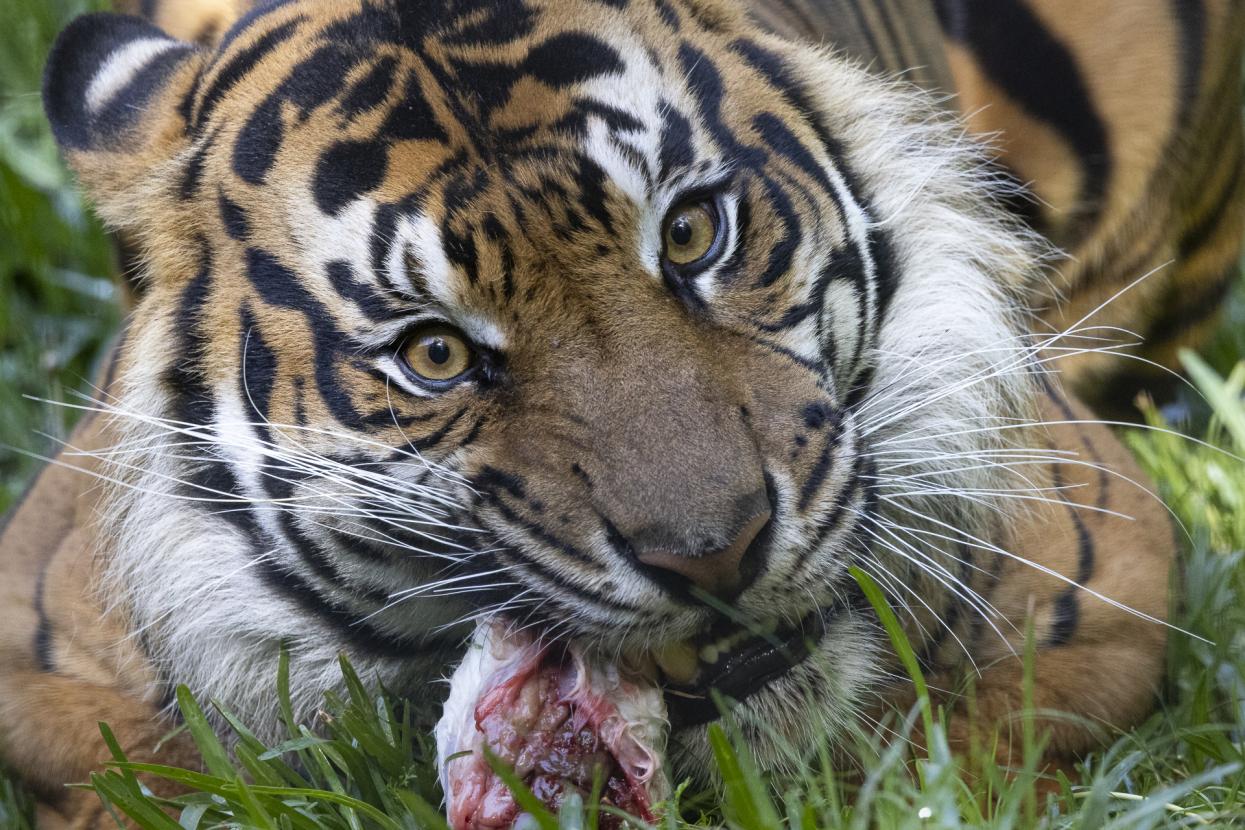
Sumatran tigers are once-a-week hunters. Their post-hunt meal may weigh up to 75 pounds.
Sumatran Tiger
These big cats may be the smallest subspecies of tiger, but they still have big appetites. Native to the Indonesian island of Sumatra adult Sumatran tigers can consume up to 75 pounds of meat at one sitting after a hunt. They usually hunt about once a week, feasting on large mammals including deer and wild boars.
Only an estimated 400 to 600 Sumatran tigers remain in their native ecosystems due to increasingly fragmented habitats, wildlife trafficking, and challenges to human-wildlife coexistence. We’re working with our partners to foster coexistence strategies for people sharing the landscape with tigers, and monitoring tiger movement to better understand their habitat use through our Asia Conservation Hub.
At the Safari Park, discover more about these critically endangered tigers—and come face-to-face with them—at Tull Family Tiger Trail.
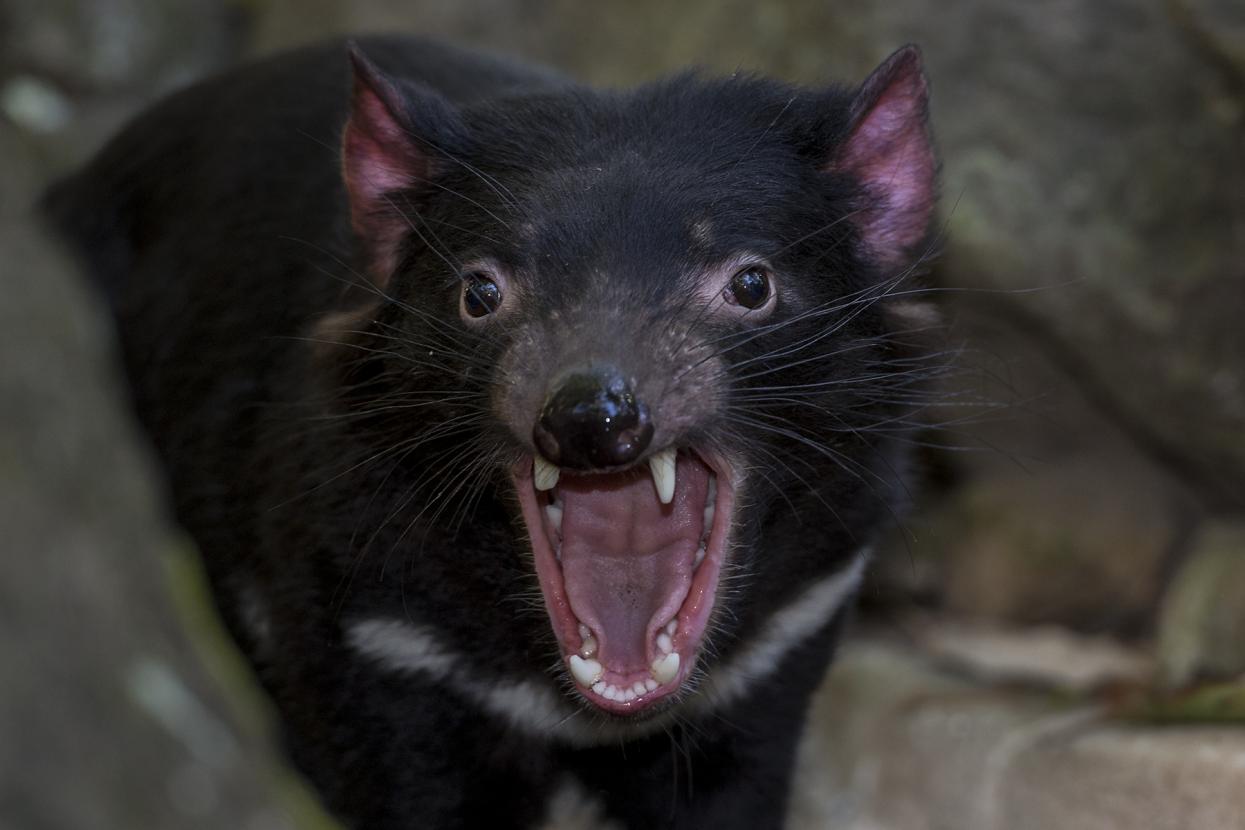
When Tasmanian devils eat together in groups, their gatherings are often punctuated with growls, snarls, and screams to establish dominance.
Tasmanian Devil
While Thanksgiving is a day when many people gorge themselves, Tasmanian devils are gorge feeders all year long. These voracious carnivores from the island of Tasmania can consume a meal as large as 40 percent of their body weight. They dine on carrion or live prey (including birds and small mammals) and usually eat the bones, too. Your support helps protect Australian wildlife like Tasmanian devils through our Australian Forest Conservation Hub.
While they are mostly solitary individuals, these energetic marsupials often feed together in groups to finish off a carcass. As with many family get-togethers, the Tasmanian devils’ group meal includes a lot of conversation—but theirs mainly consists of growls, fierce snarls, and high-pitched screams to establish dominance. Here’s hoping that’s different from your Thanksgiving celebrations.
Whether you opt for a big meal with all the trimmings or a simple celebration with family and friends, we wish you a happy Thanksgiving filled with joy and plenty of good food. And if you’re curious about what these and other wildlife species are having for dinner, both the San Diego Zoo and the San Diego Zoo Safari Park will be open on Thanksgiving Day. We can’t wait to see you!
As an ally for wildlife, you make our collaborative conservation efforts possible. Together we’re saving, protecting, and caring for the world’s wildlife—and the ecosystems we all rely on.



